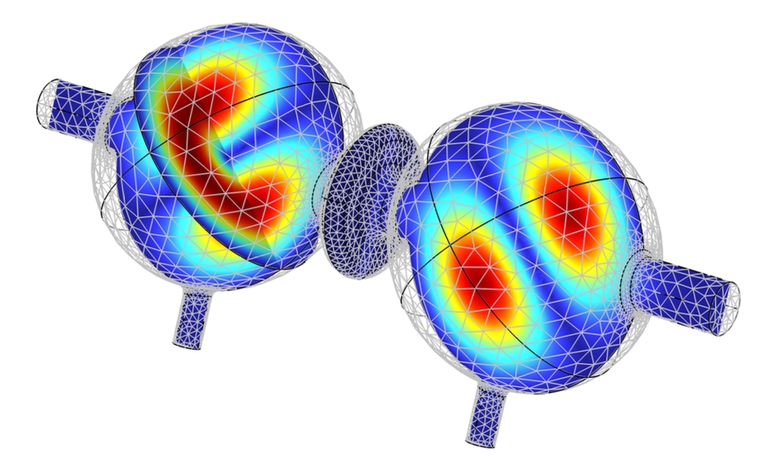SRF Cavities
Search for Gravitational Waves using SRF cavities
Any Light Particle Search
Search for Gravitational Waves using SRF cavities
Our project explores a novel way to search for high-frequency gravitational waves using superconducting radio-frequency (SRF) cavities. The basic idea is to operate a cavity with two nearly degenerate electromagnetic modes and inject RF power into one of them. If a gravitational wave passes through, it acts like a tiny parametric drive that couples the two modes, transferring a small amount of power into the second, initially empty mode. By monitoring this mode with high-precision electronics, we can look for signatures of gravitational waves.
The use of cavities for gravitational wave detection was first suggested several decades ago, but was not pursued experimentally given the superior sensitivity of interferometers. This method is particularly well suited for exploring higher-frequency gravitational waves, where interferometric techniques are less effective. Recent advances in cavity performance and noise suppression now make this approach especially attractive.
In our work, we are developing specialized heterodyne cavity systems designed to maximize signal-to-noise performance. This includes:
-
Optimized cavity design to best couplings to GWs.
-
Advanced control and readout schemes capable of resolving the extremely weak signals expected.
-
Vibration isolation and cryogenic systems that suppress background noise to near the thermal limit.
In our current R&D activities we use a prototype cavity from the CERN-INFN MAGO proposal, which was never previously treated or tested. Our pilot measurement will identify key challenges, and inform further the detector design and control strategy.

MAGO cavity: electric field profile of the TE011 pair of the quasi-degenerate symmetric and anti-symmetric modes which are coupled by a passing GW.
References
L. Fischer, et al., "First characterisation of the MAGO cavity, a superconducting RF detector for kHz-MHz gravitational waves" 2025 Class. Quantum Grav. 42 115015.
